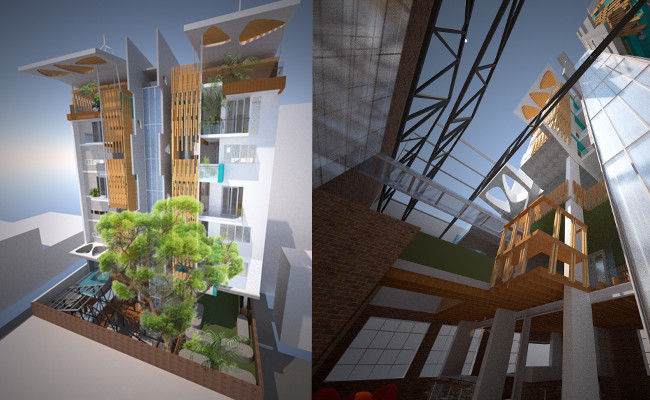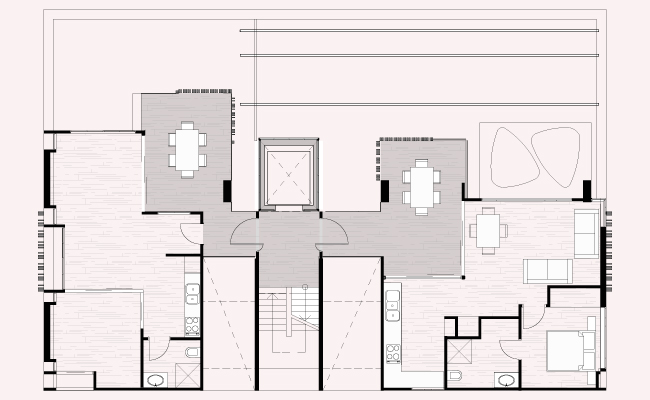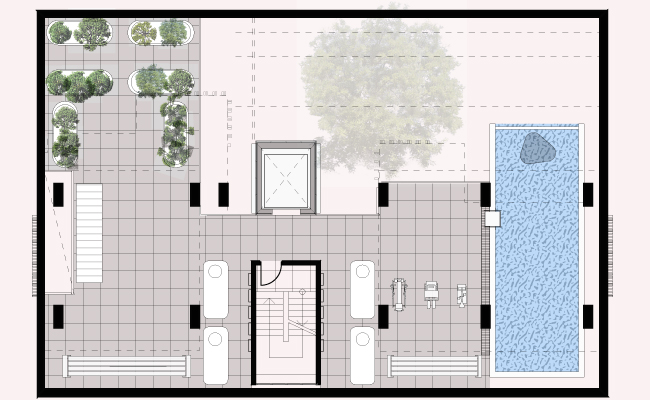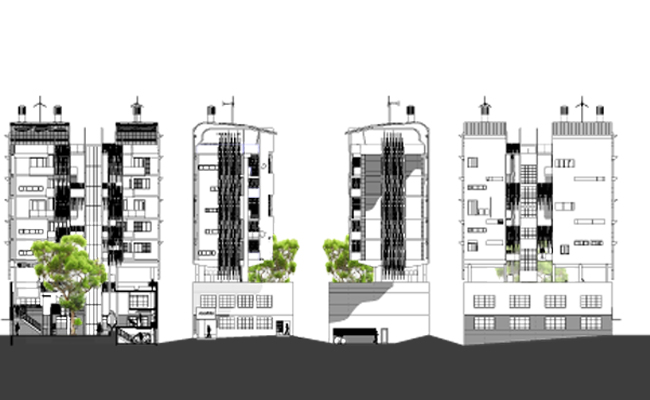Boral Design Awards | The Snorkel
The SNORKEL - A hypothetical Environmentally Sustainable Design catalyst project for urban infill.
The Snorkel is a model for sustainably increased density in an urban context, adapting existing building stock on an underdeveloped site. It is a mixed-use development encompassing environmental and social sustainability through a combination of adaptive re-use, increased density, and Boral sustainable building technologies. The proposal retains more than 50% of the existing building and the new building component has a site cover of approximately 60%.
Existing Building
Part of the upper floor is removed to create a void over a street level courtyard, which is the focus for hospitality tenancies at ground level and commercial tenancies at the upper level.
The existing north wall supports a green wall installation.
A section of the ground floor is given over to an ‘e-car’ share garage and residents’ bicycle or moped parking.
The existing roof trusses are re-used to act as a canopy frame over the courtyard, and support a translucent roof over the existing stair.
The existing roof zone becomes an open community garden, recreation facility. This acts as visual articulation between the existing building and the new building over. This facility features: raised gardens; tool storage for residents; rainwater storage; recycling systems, including worm farms & composting and solar power inverter equipment. The east wing contains recreational equipment and a solar heated pool.
New Building
The new building is organised into three distinct vertical elements – accommodation towers each side of a vertical circulation zone. The five levels of accommodation can be configured to suit specific user requirements. The proposal illustrates options for single bedroom apartments, capable of being configured as SOHO space, and two-storey, two-bedroom apartments.
The snorkel spine wall rises on the south side of both towers and curls over as a shading roof. It is both a symbolic and functional device, creating a protective textured shell to the south (roof tiles), and is a vertical zone for services and serviced spaces within the apartments. The external wall treatment softens towards the northern orientation where timber cladding and glass pre-dominate.
The articulation of the towers creates apartments with external walls to all sides, maximising passive environmental design opportunities for day-lighting and cross ventilation.
Construction
The accommodation towers are of multi-storey timber framed construction on a concrete transfer slab over the community recreation level. Roof mounted solar panels and wind turbines contribute to overall sustainability.
Architect and Interior Designer | TAG - The Albion Group
Project Team | Robert Biscoe, Marion Wilson, Graham Anderson, Nathan Vinall, Joelie Clark, Kirsty Hetherington
Landscape Architect | Dunn + Moran
Digital Rendering | Biscoe Wilson Architects
.jpg)





